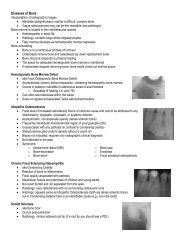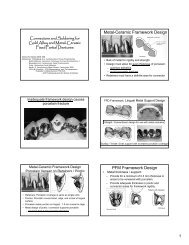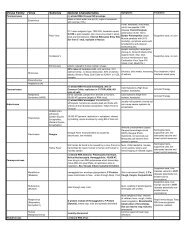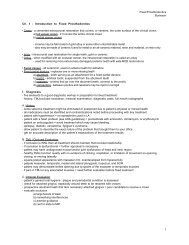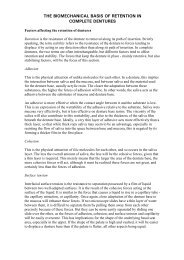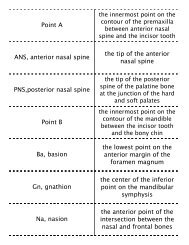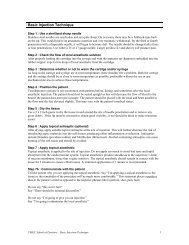Pedo Competency.pdf
Pedo Competency.pdf
Pedo Competency.pdf
You also want an ePaper? Increase the reach of your titles
YUMPU automatically turns print PDFs into web optimized ePapers that Google loves.
1 Class II Amalgams in the Primary Dentition <br />
• By: Yacoub Al-‐Abwah <br />
• Class of 2007 <br />
2 Class II amalgam restorations <br />
• Amalgam restorations are useful in children. <br />
• The technique is not as critical as when placing composites restorations . <br />
• It has been shown that the success rate is 70-‐80% when treating early to moderate <br />
interproximal lesions. <br />
3 Obtain adequate anesthesia and field isolation <br />
• This can be challenging in children when cooperation is an issue. <br />
• Rubber dam isolation helps in securing a better field of vision, as well as keeping the tongue <br />
out the way. <br />
• Do not start until the patient is profoundly anesthetized! <br />
4 Proceed with preparation <br />
• Prepare the occlusal surface using a 330, round diamond, or small pear shaped burs. <br />
• Do not extend to include all fissures but be sure to include all susceptible fissures and pit. <br />
• The depth should be 0.5 into dentin and make sure to include isthmus and dovetail for <br />
retention. <br />
• Gingival and buccolingual contacts should be just slightly open so the T-‐band can go through <br />
and can be placed firmly around the tooth. <br />
• Do not make the gingival wall too deep or you will have a narrow gingival seat because of the <br />
cervical constriction of the primary teeth. <br />
5 Preparation <br />
• Occlusal View <br />
6 Preparation <br />
7 Finishing the preparation



